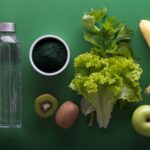Nutrition applied to sports refers to adequate nutrition according to the sport to optimize the performance of the athlete and their physical condition. The nutrition in sports goes according to each discipline due to its different physical demands. Next, I show you the types of sport according to their duration:
- Long lasting (several hours) and moderate intensity. Running, cycling, tennis, cross-country skiing or mountaineering.
- Medium duration (1-2 hours) and high intensity. Football, basketball, handball, volleyball, hockey, gymnastics, skating or squash.
- Of brief duration (from a few seconds to minutes) and intense effort. Downhill skiing, sprint running, high jump, shot put, judo or weightlifting.
Not all sports are represented, however, according to their similarity, you can place your sport in some of the categories. If you do cross-fit you should know that it is a high intensity sport that combines weight lifting, gymnastics skills and cardiovascular exercises.
Each sport has a type of optimal body composition. When the athlete meets these anthropometric specifications (fat percentage, muscle mass, muscle development, somatotype, circumferences, among others) the athlete will be very successful in their results and physical performance.
The three principles of sports nutrition are:
- Quantity and quality: Provide enough nutritious food to increase stamina, strength and clarity.
- Hydration: Prevent dehydration and fatigue simultaneously optimizing muscle performance.
- Recovery: Proper recovery after physical exercise.
Whitton, E. (2022, June 28). Sports Nutrition – Nutritionist Resource. Nutritionist Resource. (Ramirez, Sospedra, Holway, Hurtado-Sanchez, & Martinez Sanz, 2022)



